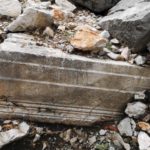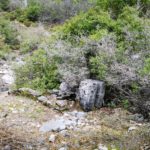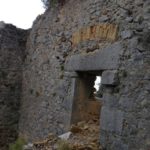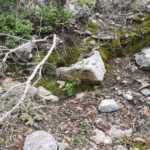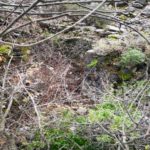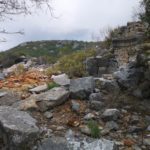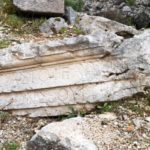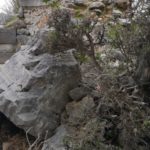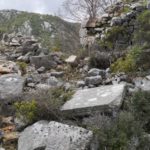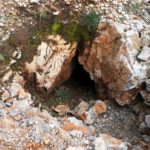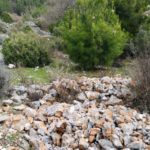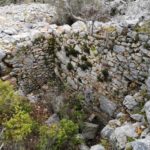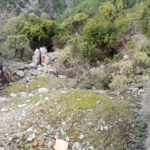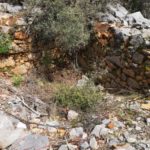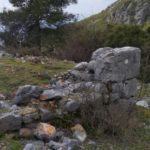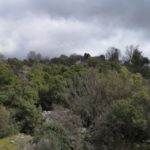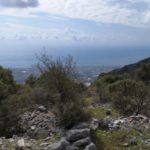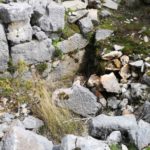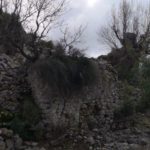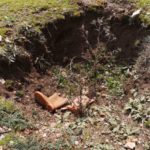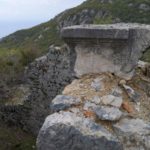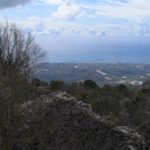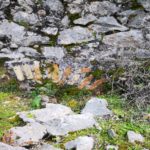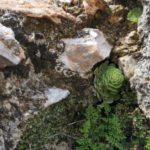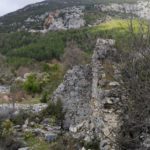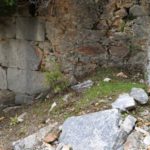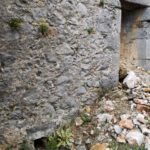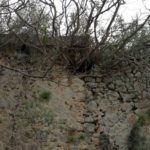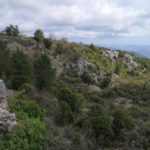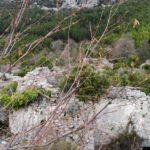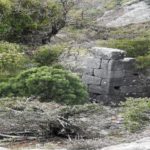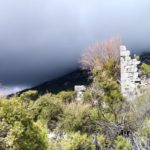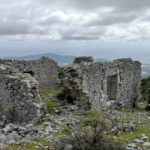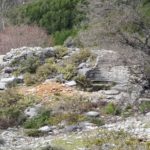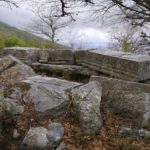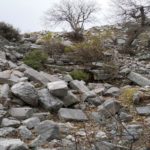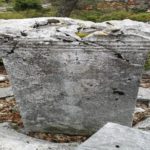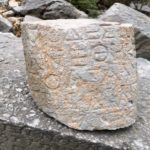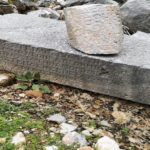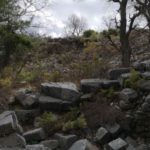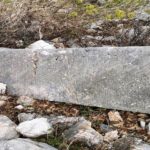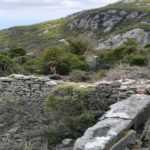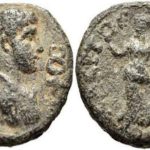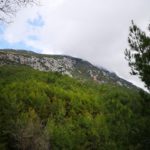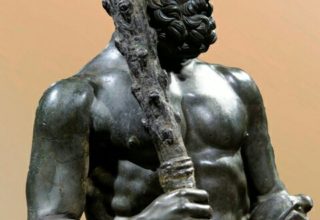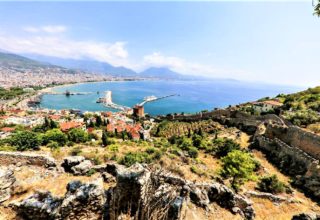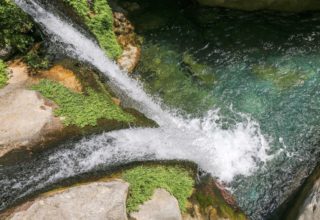Ancient City is located in Mahmutlar town of Alanya, in the neighbourhood of Gözüküçüklü (Small eyed people area). The city watches Alanya with all his glory on a wonderful hill. The thing you should do is close your eyes and listen to the silence. A few minutes later, the sound of the waterfall and the birds break the silence. Right there, Cebeli Reis Mountain behind you and the crystal Mediterranean sea shines in front of you.
Here is the ancient city of Laertes.
The antique town of Laertes is 25 km from Alanya at an altitude of around 800 metres with steep slopes to the east, west and south and bordering the foot of 1649 metres high mountain Cebeli Reis to the north.
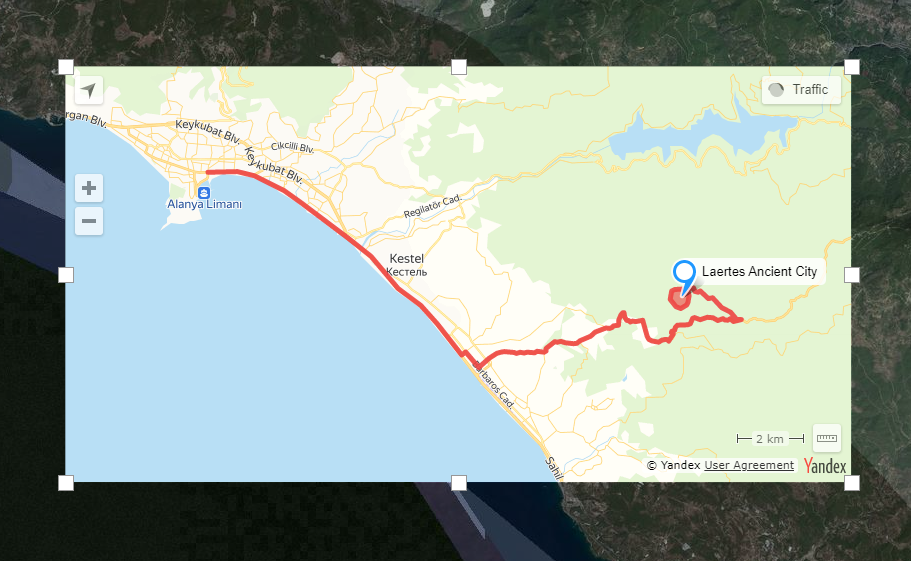
Laertes is a kind of hidden treasure in Taurus mountain. It is easy to find the ancient city. If you drive east to Mahmutlar and drive up to Hadim way from Mahmutlar you will see the Laertes road sign. The road is a few kilometres stabilised but Appr. 2 km to Ancient city is unimproved. It is better to get a high wheel car to reach there.
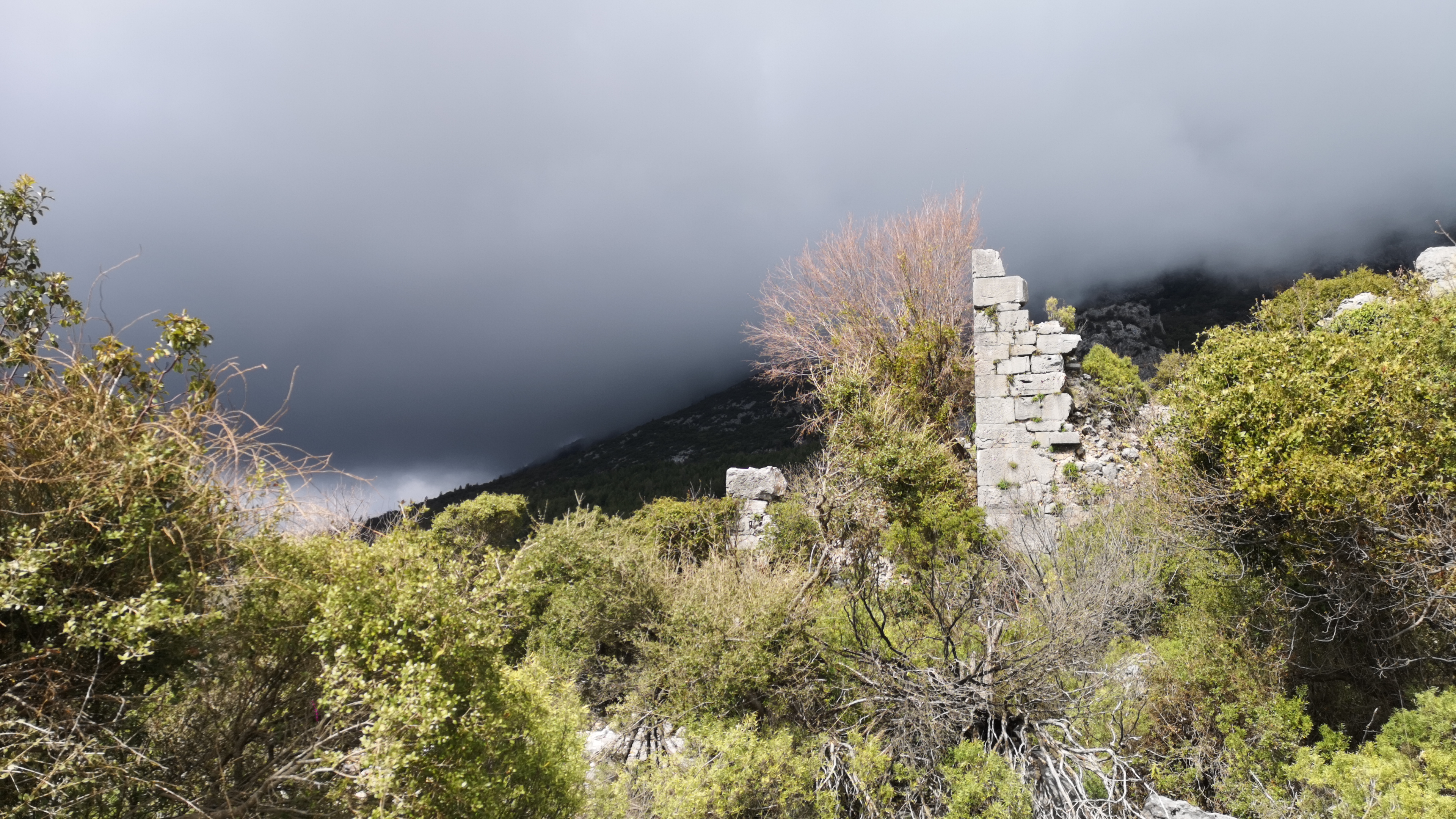
Finally, you get to a path to the north-west of the ruins. The terrain is steep and uneven, and the ruins are generally in a bad condition. Some of the remains were unfortunately looted by treasure hunters.
The route up to the fortress is defended by two spaced towers and by a stretch of wall. Underneath the fortress is an underground building consisting of three vaulted passages which could have functioned as a storehouse. Additionally on the Northside are the remains of a long paved street which would have been originally lined by statues supposedly of Roman emperors. On the south side of the street are the remains of a building approached by steps which are believed to be a council house and numerous statues.
To the west are the remains of an agora bordered by a long pavement, an exedra and a large apse building comprising complex halls. The agora (market place) with shops in the western part is in less good condition. To the north are seats arranged in a semicircle, the lower row decorated with two lion feet, a so-called exedra, where the townspeople and philosophers could discuss and relax. The nearby Caesar Temple was built by Emperor Claudius (41-54 AD). Even though the town was ethnically Greek during Roman times, as were many places on the south coast of Asia Minor, it was one of the first towns in Cilicia where the Roman emperor was worshipped along with other gods.
At the south end of the agora are the public baths and further south the necropolis. To the east one can see an odeon (covered theatre for meetings and concerts) or bouleuterion (meeting place for the city council), on Emperor Street, which used to be lined with columns. But this street is almost impossible to find amid all the piles of stones. On the seats of the odeon is a turned over stone from the 3rd century commemorating Tours, a high priest and member of the city council. The Greek text also tells that he had occupied all the functions of the city, arranged two festivals and financed the bridge across Melas (Manavgat), so that also Side had honoured him with a statue.
Immediately to the west of the odeon on a hilltop stands an Apollo Temple, and south of it a Zeus Temple in a miserable condition. They were the main gods along with the emperor and the two gods are often depicted on the coins of the city. Further up is the acropolis and the necropolis is south-west of it. A small stadium is found on the flat area to the west and next to it are the remains of a church with apse and red and blue marks from murals. Other remains of houses and buildings are spread throughout the area with the main necropolis on the mountain slope to the south of the city.
BRIEFLY, THE SETTLEMENT OF LAERTES
- The city lay on the shoulder of the mountain at the foot of the summit peak, which rises some 600 m higher. It is approached by a gully from the SE; this route is defended by two spaced towers, and by a stretch of wall where it reaches the city. The remainder of the site seems never to have had a fortification wall, but at the SE corner, there is a good-sized fortress, below which is an underground building consisting of three vaulted passages, perhaps a storehouse.
- On the NORTH side of the site are remains of a long paved street originally lined with numerous statues, many of Roman emperors.
- On the SOUTH side of this street stood a building approached by steps, possibly a council house; here also were numerous statues.
- Farther WEST is an open space, perhaps an agora, bordered by a long pavement; at the NORTH end of this is an exedra and at the SOUTH end a large building with an apse at its WEST end, comprising a complex of halls. This part of the site is covered with ruins of houses and other buildings. The main necropolis is on the mountain slope SOUTH of the city.
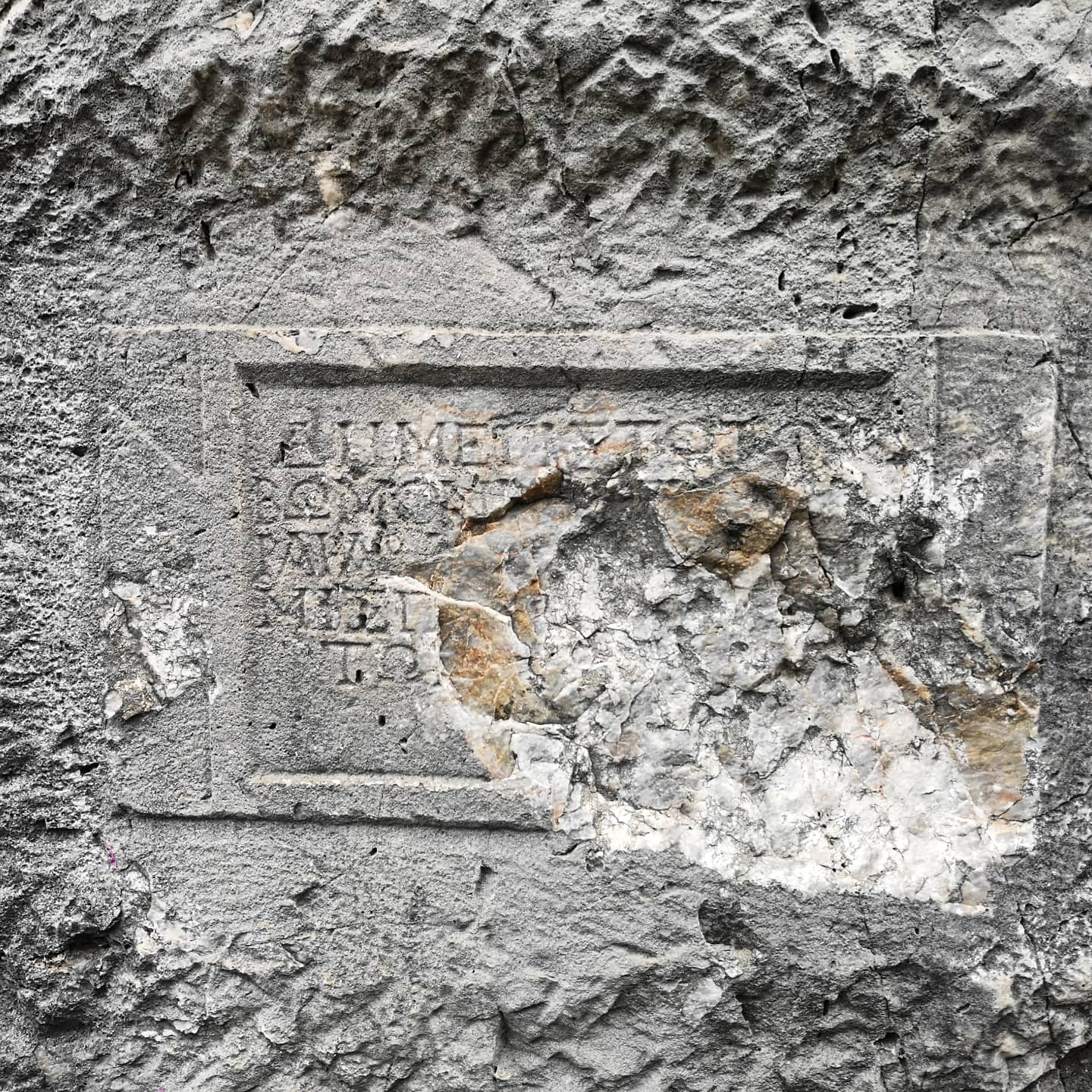
Laertes is located east of Syedra and Northwest of Coracesium. City of Cilicia Aspera or Pamphylia, almost certainly at a site high up on the mountain of Cebeli Reis and ca. 750 m above sea level. The 40 inscriptions found on the spot do not name the city, but the position agrees reasonably well with the location of Laertes in the Stadiasmus (207) as 100 states from Korakesion (Alânya), and Alexander Polyhistor ap. Steph. By. s.v. speaks of a mountain and city of Laertes. Strabo (669: the passage is confused) also places Laertes E of Korakesion. The coinage is Imperial only, of the 2d and 3d c., but the city is not mentioned either in Hierocles or in the Note.
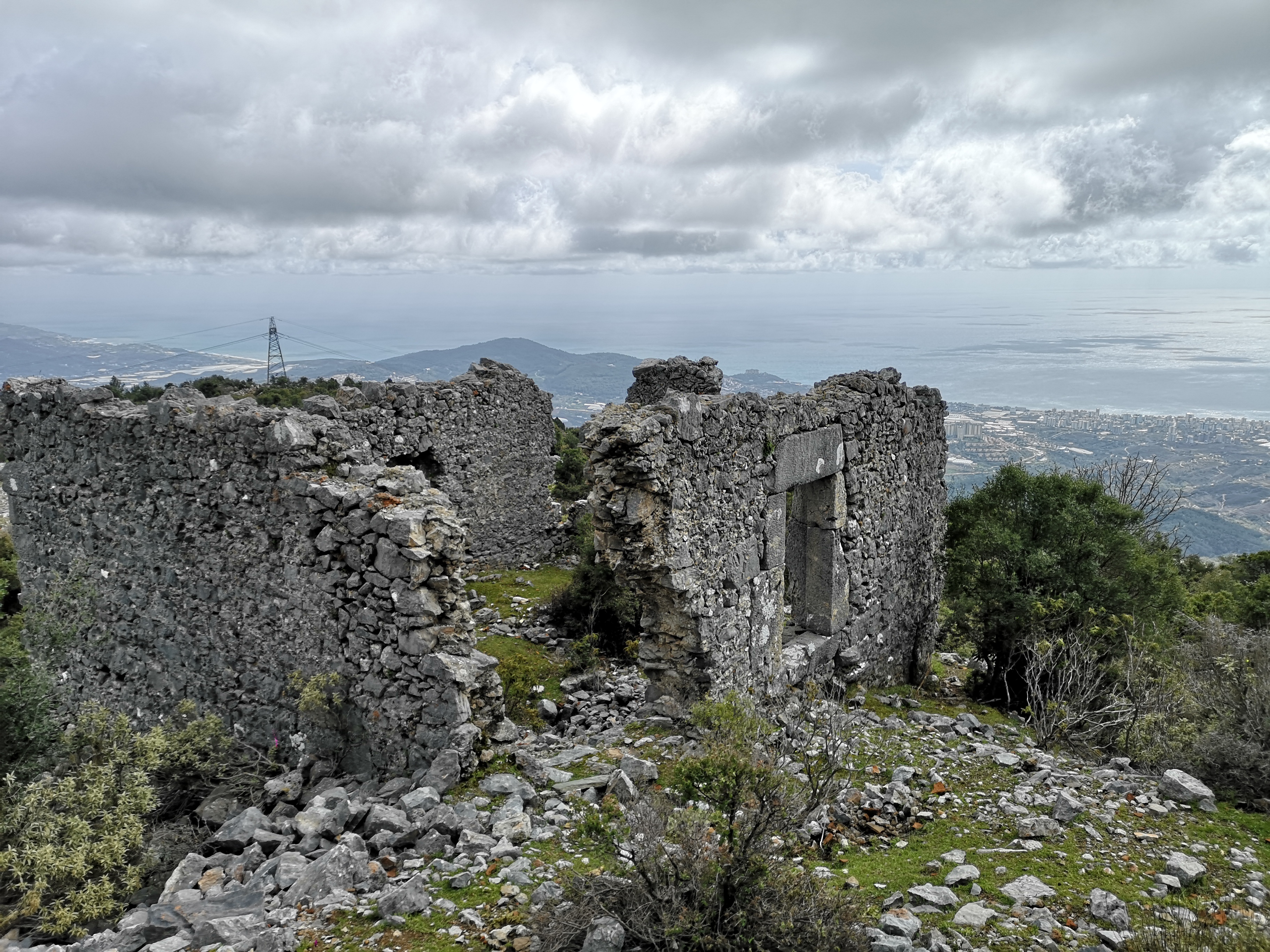
The names of these towns in ruins are not always known, but in this case, the town name was found on the foot of a statue of the Roman Emperor Vespasian. The town existed already in 625 BC; a Phoenician table from that time has been found here (now at Alanya Archaeological Museum). The table tells that the governor of the province gives his servant a piece of land. Another Phoenician inscription praises the “good wine” of the area. The Greek philosopher Strabo (around 63 BC – 19 AD) tells that the town lay on a breast-shaped hill and that ships could anchor there. This must be the antique Mahmutlar. Laertes was under pirate control until 67 BC, and the pirates did not preserve the Hellenistic buildings, so they have disappeared and are completely replaced by Roman and Byzantine buildings.
Coins were made hereunder Emperor Trajan ( 98 – 117 AD), and experts have established that the town was relatively densely populated during the 1st and 2nd centuries AD, the heyday of the town. This is also supported by the numerous inscriptions, all in Greek and from the 1st to 3rd centuries, and parts of reliefs with eagle claws and oxheads also found here. The town has also served as a retreat for retired Roman soldiers from various parts of the empire. Among them an inscription about the Syrian veteran Galba and another one of Aurelius Neon Hierax. In the Alanya museum, there is a diploma for a Roman soldier who has settled in the town after retiring from the army. Another inscription tells that the town fostered an Olympic champion by the name of Polemos Nou.
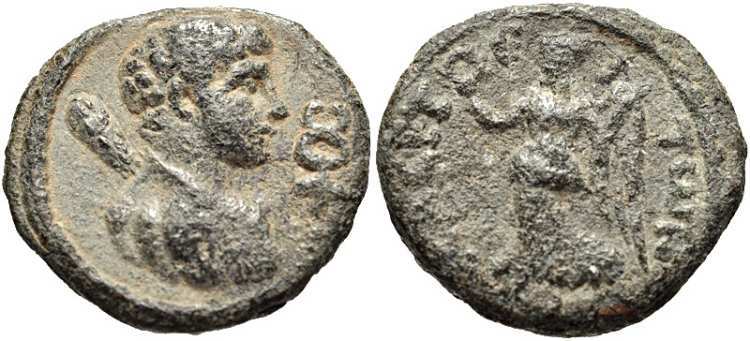
Laertes Ancient city is a wonderful city escape in Alanya. If you like to see more historical places in Alanya Syedra Ancient City could be very interesting. Follow Roman’s footsteps from Alanya to Selinus where the Roman Emperor Trajan died in Gazipaşa. Alanya and surrounding are full of historical ruins that attract the adventurers. Alanya is the final destination for explorers.
Here are the images about Laertes. Photos are taken by Yakup Uslu.
- Laertes – Visit Alanya
- Laertes – Visit Alanya
- Laertes – Visit Alanya
- Laertes – Visit Alanya
- Laertes – Visit Alanya
- Laertes – Visit Alanya
- Laertes – Visit Alanya
- Laertes – Visit Alanya
- Laertes – Visit Alanya
- Laertes – Visit Alanya
- Laertes – Visit Alanya
- Laertes – Visit Alanya
- Laertes – Visit Alanya
- Laertes – Visit Alanya
- Laertes – Visit Alanya
- Laertes – Visit Alanya
- Laertes – Visit Alanya
- Laertes – Visit Alanya
- Laertes – Visit Alanya
- Laertes – Visit Alanya
- Laertes – Visit Alanya
- Laertes – Visit Alanya
- Laertes – Visit Alanya
- Laertes – Visit Alanya
- Laertes – Visit Alanya
- Laertes – Visit Alanya
- Laertes – Visit Alanya
- Laertes – Visit Alanya
- Laertes – Visit Alanya
- Laertes – Visit Alanya
- Laertes – Visit Alanya
- Laertes – Visit Alanya
- Laertes – Visit Alanya
- Laertes – Visit Alanya
- Laertes – Visit Alanya
- Laertes – Visit Alanya
- Laertes – Visit Alanya
- Laertes – Visit Alanya
- Laertes – Visit Alanya
- Laertes – Visit Alanya
- Laertes – Visit Alanya
- Laertes – Visit Alanya
- Laertes – Visit Alanya
- Laertes – Visit Alanya
- Laertes – Visit Alanya
- Laertes – Visit Alanya
- Laertes – Visit Alanya
Ps: Images are taken in March 2020.
Yakup USLU
#alanyafinaldestination
Sources:
https://graecomuse.wordpress.com/2012/05/08/ancient-sites-of-cilicia-anatolia-part-1/
https://www.asiaminorcoins.com/gallery/thumbnails.php?album=313



